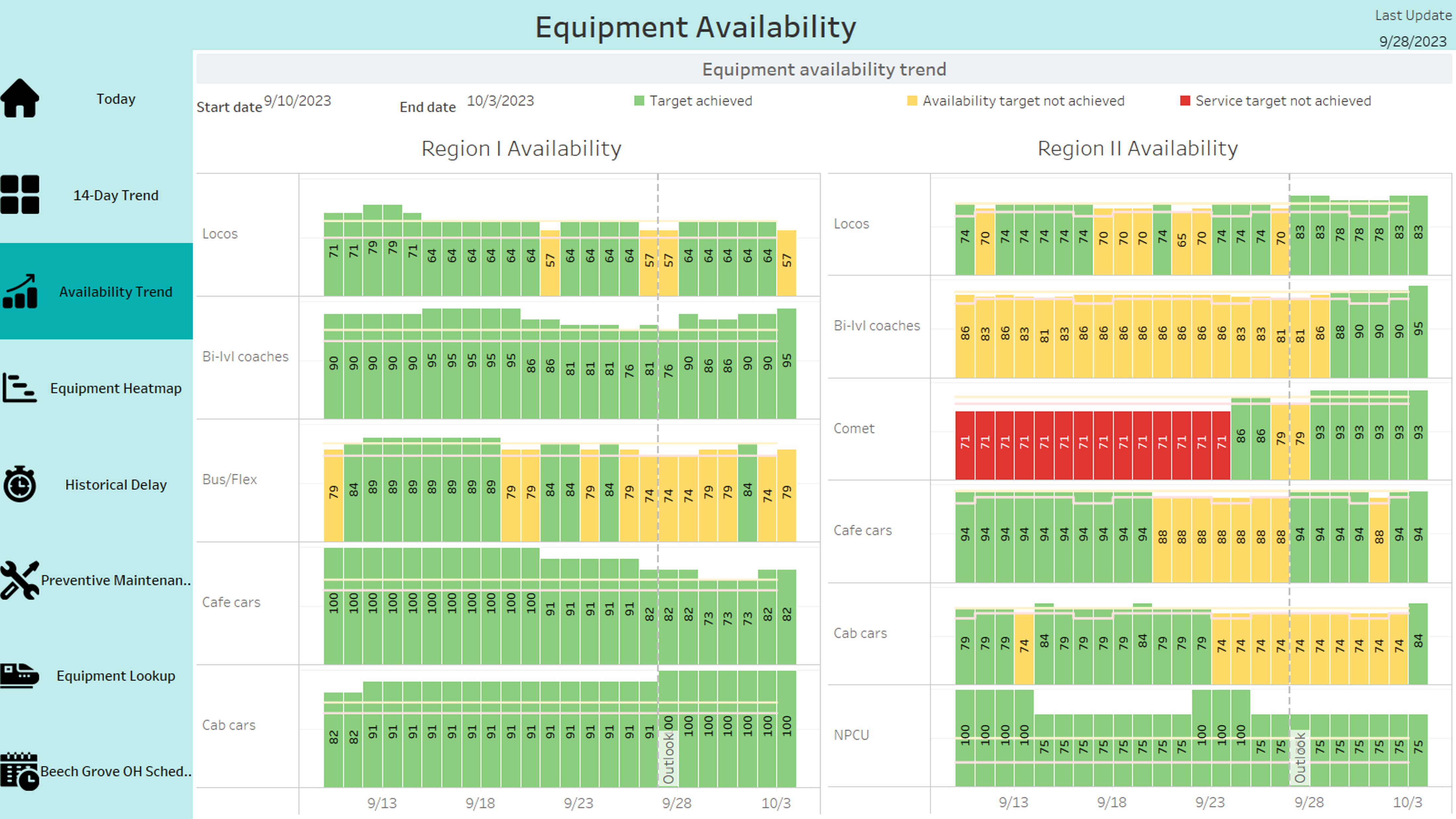
Improving fleet availability through a data-driven approach
Implementing a Collaborative Approach to Fleet Management
Faced with persistent fleet maintenance challenges within a multi-stakeholder landscape, a state rail transportation department sought a comprehensive solution. DB facilitated cross-functional discussions introducing structural enhancements and a performance metric-driven approach. By integrating clear visuals, analytics platforms, and fostering weekly performance dialogues, we bridged the communication gap among stakeholders. This strategy not only elevated fleet availability but also streamlined maintenance processes, establishing a cooperative and efficient system for addressing systemic fleet management issues.
Challenge
Our client, a state rail transportation department, was experiencing sustained fleet availability and maintenance quality issues driven by unclear roles and responsibilities within their complex stakeholder landscape. The state-owned fleet is utilized by multiple agencies who manage service across several corridors and is operated and maintained by third-party service providers. In the past, no consistent fleet maintenance strategy was applied across the board. Issues were typically resolved through frequent firefighting, higher spare fleet ratios, and higher maintenance costs per vehicle.
Approach
The DB team established a cross-functional task force to implement structural improvements and a KPI-based performance management process. Key measures were identified, calculated, and presented in clear and concise visuals. These scorecards were then translated to an analytics and visualization platform for further insight into performance. DB facilitated structured weekly performance dialogues between the fleet owner, the service managers, and the maintenance providers creating a venue for open discussion and for jointly troubleshooting inefficiencies and problems. Over time, our team helped to identify various root causes of performance deviations and systematically eliminate them by facilitating dedicated working groups and task forces.
Results
The project resulted in a gradual, measurable increase in fleet availability, decrease in maintenance dwell times, and reduction of spare fleet. The ongoing weekly performance dialogues established an efficient and collaborative workflow between the various stakeholders, allowing for the resolution of systemic issues in fleet management in a structured way without the need for firefighting.




